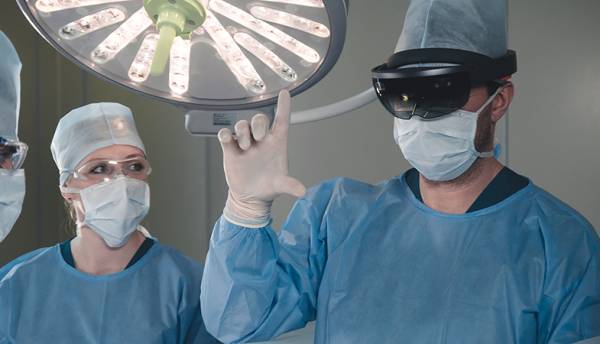Novarad, a company offering Medical Imaging Solutions for Healthcare Providers, is working to revolutionise the field of cranial neurosurgery with its Augmented Reality surgical navigation system.
This technology, showcased in a recent study conducted by Dr Timur Urakov, MD, has unveiled its potential in transforming the way surgeons operate on the human brain. The study, carried out by a team of esteemed neurosurgeons in Miami, aimed to assess the capabilities of the VisAR system in real-life surgical scenarios. Novarad feel the results of the study were “nothing short of astonishing”, demonstrating the impact of the VisAR system on surgical precision and outcomes.
By seamlessly integrating Augmented Reality into the surgeon’s field of view, the VisAR system overlays critical information onto the patient’s anatomy in real-time. This revolutionary approach enables surgeons to visualise vital structures, such as blood vessels and nerves, with exceptional precision and accuracy.
The study reported an impressive success rate of 91% when utilising the VisAR system. The VisAR system serves as a trusted ally for surgeons, providing them with precise guidance and enhancing their professional skillset. With this technology at their disposal, surgeons can effortlessly plan the optimal surgical trajectory, navigate complex anatomical structures and achieve superior surgical outcomes. By leveraging the VisAR system, surgeons gain a comprehensive understanding of the patient’s anatomy and can make informed decisions during the surgical procedure.
“As we witness the remarkable capabilities of our VisAR system in transforming cranial neurosurgery, we are at the forefront of a new era in surgical navigation,” said Steve Cvetko, Co-creator of VisAR. “Augmented Reality has the power to revolutionise the way surgeons operate, providing them with real time, precise guidance and enhancing their decision-making process. The future of AR in surgery is bright and we are committed to pushing the boundaries of innovation to improve patient outcomes and empower surgeons worldwide.”
One of the key advantages of the VisAR system is its intuitive interface, which facilitates seamless collaboration among surgical teams. Multiple team members can simultaneously access the Augmented Reality view of a surgery, fostering an environment of interdisciplinary synergy, collaboration and knowledge exchange. This level of real-time collaboration allows for improved communication among team members, leading to more efficient and effective surgical procedures. Surgeons can consult with colleagues, discuss complex cases and share insights, all within the immersive Augmented Reality environment provided by the VisAR system.
Not only is VisAR useful in the operating room, but the system offers significant potential for surgical training and education. Aspiring neurosurgeons can benefit from the immersive Augmented Reality environment to practice surgical techniques, visualise complex anatomical structures and develop their skills in a safe and controlled setting.
As research and development continue, this technology is poised to make a lasting impact on the field, empowering surgeons and revolutionising the way we approach complex neurosurgical procedures.
Click below to share this article

